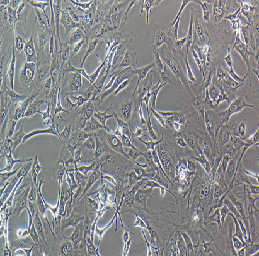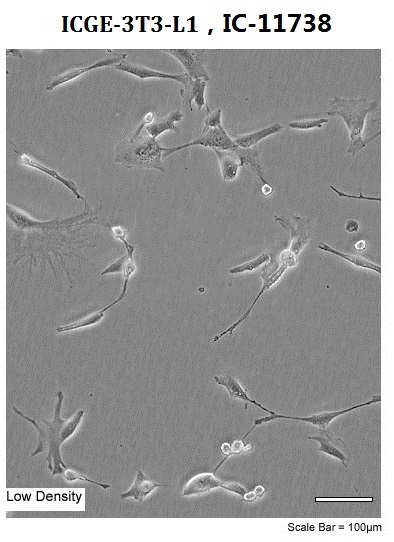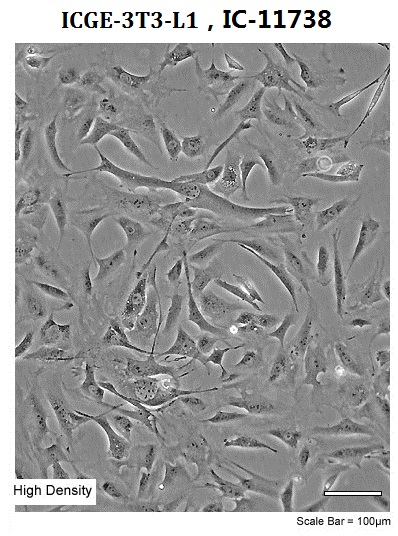


Overview
| Organism | Mus musculus, mouse |
|---|---|
| Tissue | embryo |
| Cell Type | fibroblast |
| Product Format | frozen |
| Morphology | fibroblast |
| Culture Properties | adherent |
| Biosafety Level |
1
Biosafety classification is based on U.S. Public Health Service Guidelines, it is the responsibility of the customer to ensure that their facilities comply with biosafety regulations for their own country. |
| Age | embryo |
| Applications |
This cell line is a suitable transfection host.
|
| Storage Conditions | liquid nitrogen vapor phase |
| Disclosure | This material is cited in a US or other Patent and may not be used to infringe the claims. Depending on the wishes of the Depositor, ATCC may be required to inform the Patent Depositor of the party to which the material was furnished. This material may not have been produced or characterized by ATCC. |
Properties
| Derivation |
L1 is a continuous substrain of 3T3 (Swiss albino) developed through clonal isolation.
|
|---|---|
| Receptor Expression |
insulin, expressed
|
| Genes Expressed |
triglycerides
|
| Cellular Products |
triglycerides
|
| Comments |
The cells undergo a pre-adipose to adipose like conversion as they progress from a rapidly dividing to a confluent and contact inhibited state. A high serum content in the medium enhances fat accumulation [PubMed ID: 4426090].
Tested and found negative for ectromelia virus (mousepox). This line is also designated as ATCC CCL-92.1. ATCC CL-173 was deposited in 1974 without passage number information from the depositor. |
Background
| Complete Growth Medium |
The base medium for this cell line is ATCC-formulated Dulbecco''s Modified Eagle''s Medium, Catalog No. 30-2002. To make the complete growth medium, add the following components to the base medium: bovine calf serum to a final concentration of 10%. |
|---|---|
| Subculturing |
Protocol: Never allow culture to become completely confluent.
Interval: Every three days
Medium Renewal: 2 to 3 times per week
|
| Cryopreservation |
Freeze medium: Complete growth medium supplemented with 5% (v/v) DMSO
Storage temperature: liquid nitrogen vapor phase
|
| Culture Conditions |
Atmosphere: air, 95%; carbon dioxide (CO2), 5%
Temperature: 37��C
Growth Conditions: The serum used is important in culturing this line. Calf serum is recommended and not fetal bovine serum. The calf serum initially employed and found to be satisfactory was from the Colorado Serum Co. Denver.
|


